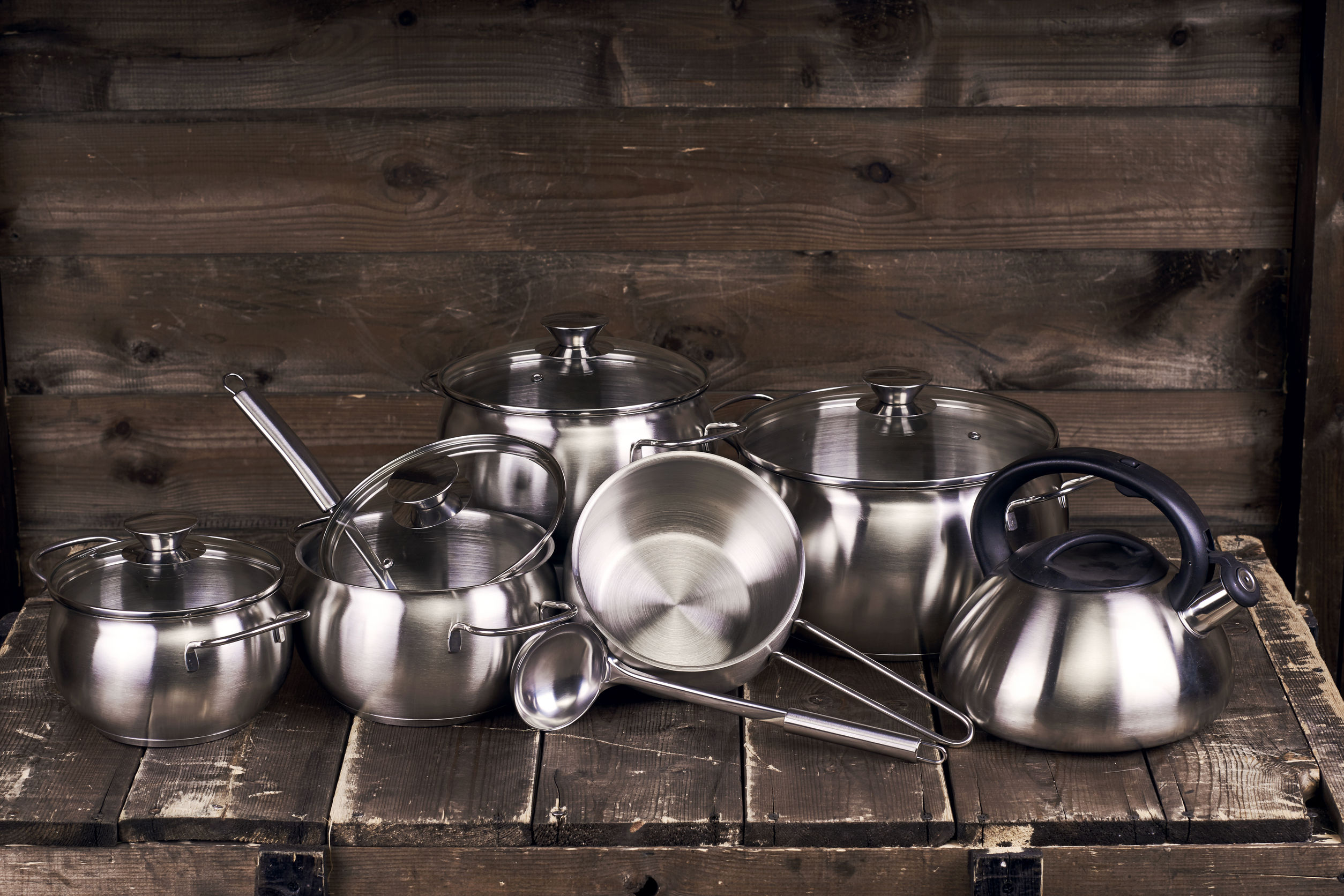
Last week I discussed my strategies for keeping a well-stocked healthy pantry and fridge. Along with easy go-to meal ideas you can always fall back on when you keep a basic list of healthy foods on hand.
Today’s let’s take this conversation further by looking at the kitchen as a whole. We can’t simply focus on the foods we have in our kitchen without also considering the quality of cooking utensils and storage solutions we have available.
We are exposed to so many different toxins every day, especially in our house, and the kitchen is often ground zero. Let’s make strides to change that.
Cookware
First up, cookware. Non-stick cookware is very problematic when it comes to toxic exposure and while I totally agree the clean up is easier it’s just not worth the risk.
Go through your cookware and any chipped non-stick pans should be thrown out immediately. Then, as you are able to, gradually replace those pots and pans with healthier options.
My favorites are stainless steel, cast iron, and enameled cast iron. Enameled cast iron pans still allow you to brown foods without the stick and are incredibly easy to clean up.
Storage Solutions
With all my recommendations of batch cooking and planned leftovers comes the inevitable need for good food storage. Plastic has inundated our lives and especially in the kitchen, between plastic containers, plastic wrap, baggies, etc.
Swap plastic food containers and water bottles with glass or stainless steel. Replace plastic baggies with reusable (washable) lunch bags and replace plastic cling wrap with beeswax coated cloth (it’s just as sticky and can be reused).
Cleaning Supplies
Aside from the laundry room you probably house most of your cleaning supplies in the kitchen, including dish soap. Most conventional cleaning products contain hormone disrupting solvents.
Luckily there are many natural cleaning products in the marketplace now along with really simple ingredients for you to make your own cleaning products. Check out Wellness Mama’s 19 Natural Cleaning Tips with recipes and cleaning ingredients to keep on hand.
Pantry Supplies
Remember that many processed food products that end up in our pantries contain hormone disrupting additives and preservatives. Limit the amount of processed foods you keep on hand to only ones with the least amount of ingredients and without added chemicals.
Canned foods are also a problem because of the ingredients found in the lining of cans, like BPA, so look for BPA-Free options or choose products stored in glass instead.
Take Home Message
Although it may not be possible to completely control our exposure to toxins we can certainly take steps to reduce exposure.
Switching out your cooking utensils and storage containers are a great first step. Now admittedly it is not inexpensive to switch out all your pots, pans, and containers. Make a commitment to gradually replace items as you are able.
For the past 10 years or so I’ve made it a tradition to treat myself to a new kitchen item at Christmas; that’s my present from my family. I’ve been able to gradually accrue quite a collection of pots, pans, and fancier cooking supplies.
However you are able to do it, the important thing is to start with one goal and gradually build from there. By taking steps in the right direction you will not only be providing you and your family with healthier food but also with a smaller toxic load.
